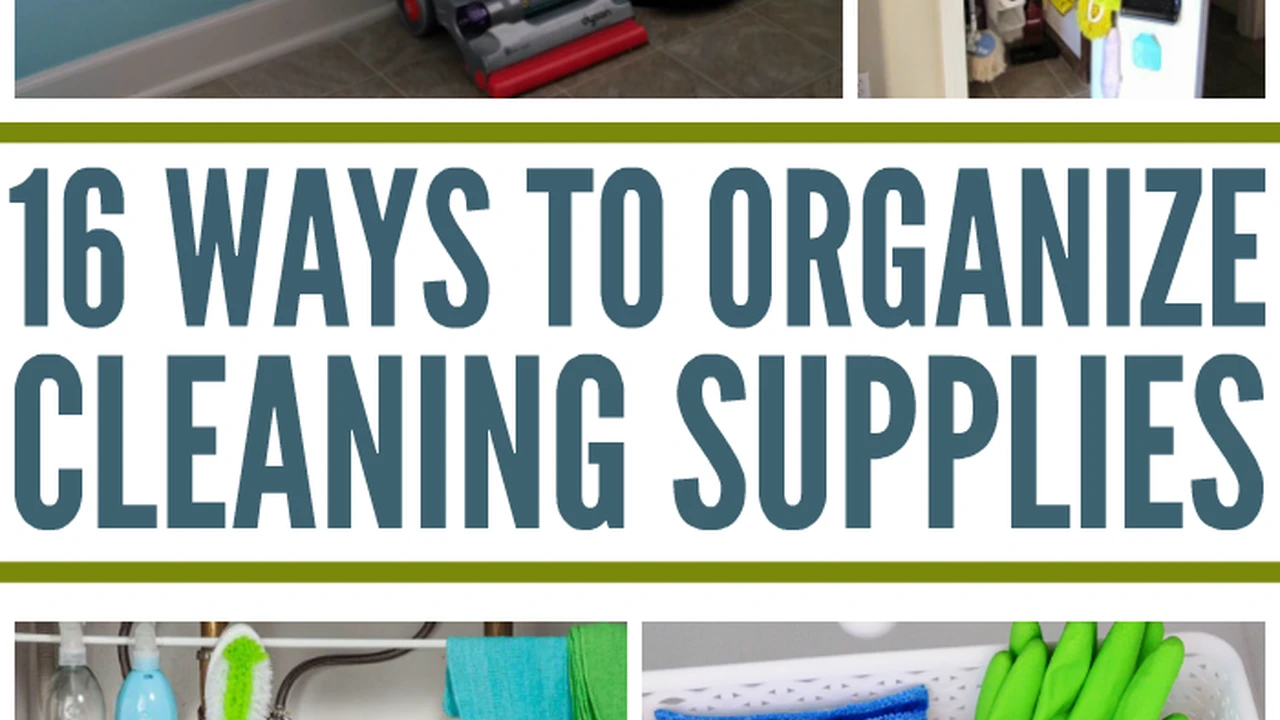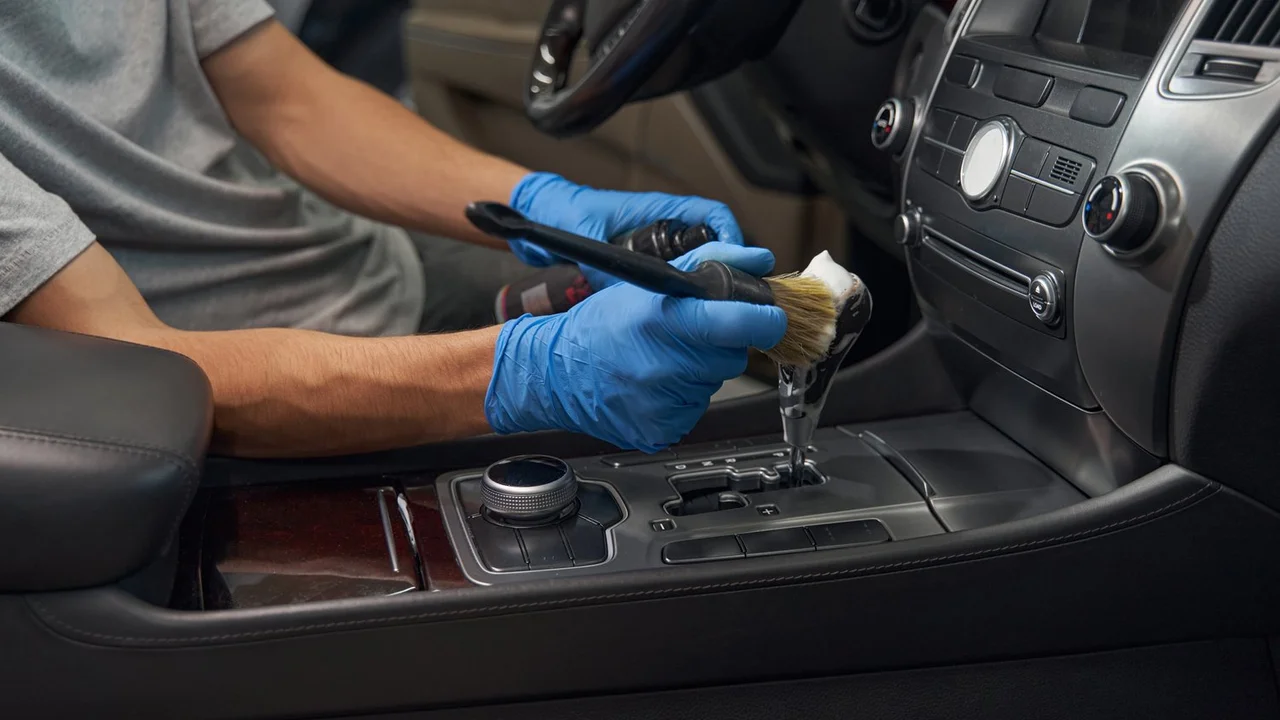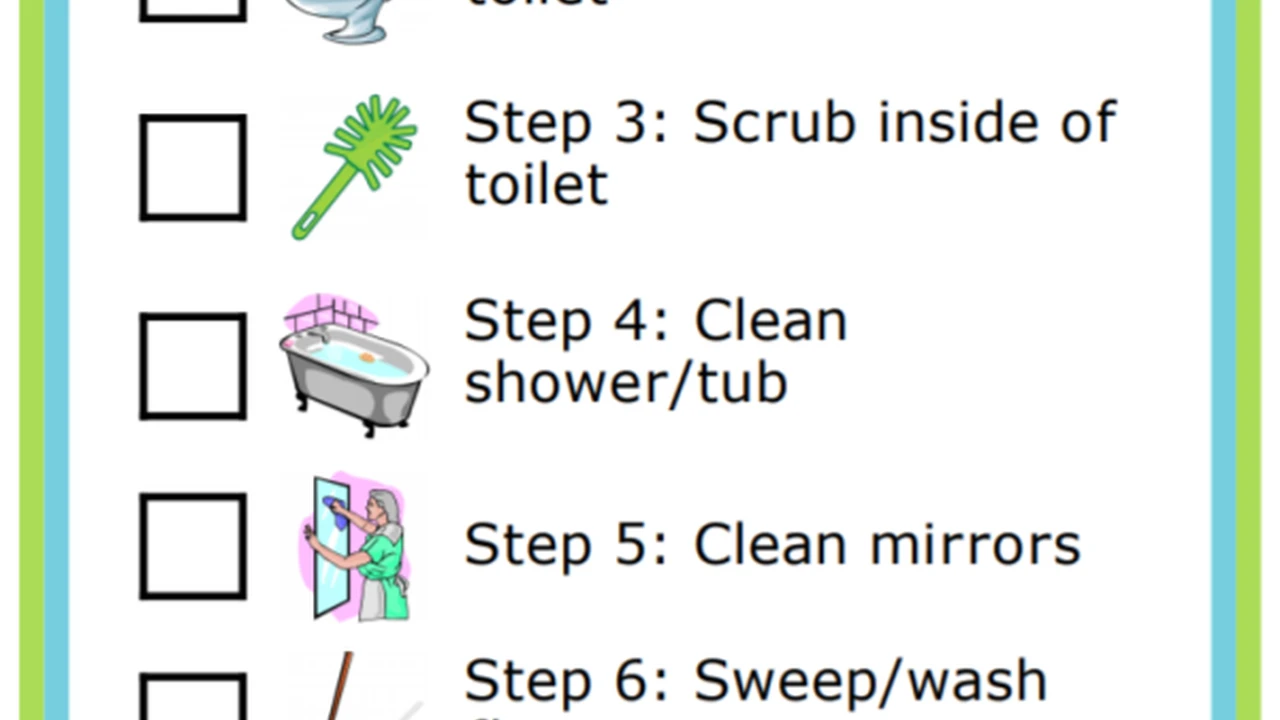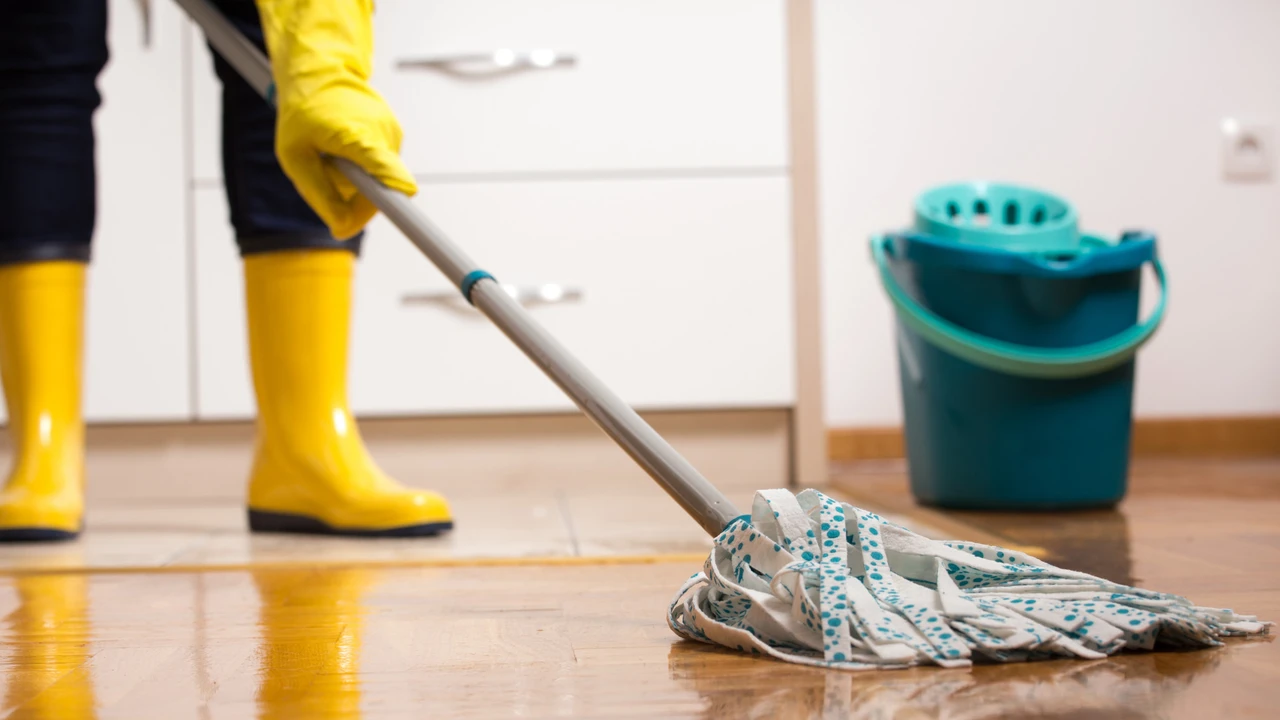How to Organize Your Cleaning Supplies for Maximum Efficiency

Decluttering Your Cleaning Arsenal A Guide to Home Cleaning Supplies Organization
Okay, let's be real. How many of you have a cleaning supplies stash that looks like a bomb went off? Bottles overflowing, sponges hiding in the shadows, and a general sense of "where did I even get all this stuff?" Yeah, me too. But fear not! We're about to transform that chaotic corner into a sparkling sanctuary of organized cleaning goodness. This isn't just about aesthetics; it's about saving time, money, and your sanity. Imagine knowing exactly where everything is, being able to grab what you need without a frantic search, and actually *enjoying* the cleaning process (well, maybe not enjoying, but tolerating it more). Let's dive in!
Assessing the Damage A Cleaning Products Inventory Checklist
First things first, we need to know what we're working with. Grab a trash bag (you'll need it) and pull everything out. I mean *everything*. Lay it all out on a sheet or a table. This is where the reckoning begins. Go through each item and ask yourself these questions:
- Is it expired? Cleaning products DO expire. Check the labels. If it's past its prime, toss it.
- Do I actually use it? That fancy floor cleaner you bought on a whim three years ago? If you haven't used it, donate it (if it's still good) or toss it.
- Is it leaking or damaged? Safety first! Dispose of any leaking or damaged containers properly.
- Do I have duplicates? Unless you're running a cleaning service, you probably don't need three bottles of the same window cleaner. Consolidate or donate.
Be ruthless! This is your chance to declutter and streamline your cleaning routine. Once you've weeded out the unnecessary items, you'll have a much clearer picture of what you actually need to organize.
Choosing Your Cleaning Supplies Storage Solution Optimizing Space and Accessibility
Now that you've got your pared-down collection, it's time to find the perfect home for your cleaning supplies. The best storage solution will depend on your space, your budget, and your personal preferences. Here are a few ideas:
- Under-Sink Organizers: A classic for a reason! These organizers maximize the space under your kitchen or bathroom sink. Look for adjustable shelves and pull-out drawers for easy access.
- Cleaning Caddies: Perfect for carrying your supplies from room to room. Choose a sturdy caddy with compartments for different types of products.
- Shelving Units: If you have a larger space, a shelving unit can provide ample storage for all your cleaning essentials. Consider adjustable shelves to accommodate different sized bottles.
- Rolling Carts: These are great for small spaces or for people who need to move their cleaning supplies around frequently.
- Wall-Mounted Organizers: Free up valuable floor space with wall-mounted organizers. These are ideal for storing spray bottles, sponges, and other small items.
- Clear Plastic Bins: These are stackable, affordable, and allow you to easily see what's inside. Label them clearly for easy identification.
Think about how often you use each item. The products you use most frequently should be the easiest to access. Consider vertical storage solutions to maximize space, especially in small areas.
The Art of Arrangement Organizing Cleaning Products by Category and Frequency of Use
Once you've chosen your storage solution, it's time to start organizing. The key is to create a system that makes sense to you and that you can easily maintain. Here are a few tips:
- Group similar items together. Put all your bathroom cleaners in one area, your kitchen cleaners in another, and your floor cleaners in a third.
- Store frequently used items within easy reach. The products you use every day should be the easiest to grab.
- Store less frequently used items on higher or lower shelves. Things like furniture polish or oven cleaner can be stored out of the way.
- Use clear containers to see what's inside. This will save you time and prevent you from buying duplicates.
- Label everything! This is crucial for keeping your system organized and for reminding yourself where everything goes.
Consider using drawer dividers or small bins to further organize your supplies within your chosen storage solution. This will help prevent clutter and make it easier to find what you need.
Safety First Storing Cleaning Solutions Responsibly and Securely
Safety is paramount when it comes to storing cleaning supplies. Many cleaning products contain harsh chemicals that can be dangerous if not handled properly. Here are some important safety tips:
- Store cleaning products out of reach of children and pets. This is the most important safety rule. Use childproof locks on cabinets if necessary.
- Never mix cleaning products. Mixing certain chemicals can create toxic fumes.
- Store flammable products away from heat and open flames. This includes things like aerosol sprays and rubbing alcohol.
- Keep cleaning products in their original containers. This will help you identify the contents and prevent accidental misuse.
- Dispose of empty containers properly. Follow the instructions on the label.
Consider storing cleaning products in a well-ventilated area to prevent the buildup of fumes. If you have any questions about the safety of a particular cleaning product, consult the manufacturer's website or call their customer service line.
Product Recommendations and Comparisons Choosing the Right Cleaning Tools
Now, let's talk about some specific products that can help you keep your home clean and organized. I've included some recommendations and comparisons to help you choose the right tools for the job.
All-Purpose Cleaners:
- Method All-Purpose Cleaner: A plant-based cleaner that's effective on a variety of surfaces. Available in a variety of scents. Around $3 per bottle. Best for everyday cleaning on countertops, appliances, and floors.
- Mrs. Meyer's Clean Day Multi-Surface Everyday Cleaner: Another plant-based option with a focus on aromatherapy. Available in a wide range of scents. Around $4 per bottle. Great for those sensitive to strong chemical smells.
- Lysol All-Purpose Cleaner: A powerful disinfectant that kills 99.9% of germs. Around $3 per bottle. Ideal for disinfecting high-touch surfaces like doorknobs and light switches.
Comparison: Method and Mrs. Meyer's are great for everyday cleaning and offer a more natural approach. Lysol is a stronger disinfectant that's better suited for killing germs. Consider your specific needs when choosing an all-purpose cleaner.
Floor Cleaners:
- Swiffer WetJet: A convenient all-in-one mopping system. Includes a cleaning solution and disposable pads. Around $25 for the starter kit. Perfect for quick cleanups and small spaces.
- Bona Hardwood Floor Cleaner: Specifically designed for hardwood floors. pH-neutral formula that won't damage the finish. Around $15 per bottle. The best choice for maintaining hardwood floors.
- Pine-Sol Multi-Surface Cleaner: A classic cleaner that's effective on a variety of floor types. Leaves a strong pine scent. Around $4 per bottle. A budget-friendly option for general floor cleaning.
Comparison: Swiffer WetJet is convenient but can be expensive in the long run due to the cost of replacement pads. Bona is the best choice for hardwood floors, while Pine-Sol is a more affordable option for other floor types.
Bathroom Cleaners:
- Clorox Toilet Bowl Cleaner: A powerful cleaner that effectively removes stains and kills germs in the toilet bowl. Around $3 per bottle. Essential for keeping the toilet bowl clean and sanitary.
- Tilex Mold & Mildew Remover: A bleach-based cleaner that effectively removes mold and mildew from tile and grout. Around $4 per bottle. The best choice for tackling mold and mildew in the bathroom.
- Scrubbing Bubbles Bathroom Cleaner: A foaming cleaner that clings to surfaces and removes soap scum and grime. Around $4 per can. Great for cleaning shower walls and tubs.
Comparison: Clorox is essential for cleaning the toilet bowl, Tilex is the best choice for removing mold and mildew, and Scrubbing Bubbles is great for general bathroom cleaning.
Specialty Cleaning Products:
- Weiman Stainless Steel Cleaner & Polish: Removes fingerprints and smudges from stainless steel appliances. Around $7 per bottle. Keeps stainless steel appliances looking shiny and new.
- CLR Calcium, Lime & Rust Remover: Removes calcium, lime, and rust stains from various surfaces. Around $6 per bottle. Effective for removing hard water stains.
- Goo Gone Adhesive Remover: Removes sticky residue from stickers, tape, and other adhesives. Around $7 per bottle. A must-have for removing stubborn adhesive residue.
Maintaining Your Organized System A Sustainable Cleaning Routine
Organizing your cleaning supplies is just the first step. The real challenge is maintaining your organized system. Here are a few tips to help you stay on track:
- Put things back where they belong after each use. This is the most important step. Make it a habit to put each product back in its designated spot after you're finished using it.
- Do a quick inventory check every month. Take a few minutes to check your supplies and see if you need to restock anything.
- Declutter regularly. Get rid of any expired or unused products.
- Adjust your system as needed. If something isn't working, don't be afraid to change it. The goal is to create a system that works for you.
By following these tips, you can keep your cleaning supplies organized and enjoy a cleaner, more efficient home. Remember, it's not about perfection; it's about progress. Even a little bit of organization can make a big difference!
DIY Cleaning Solutions A Natural Approach to Home Cleaning
For those looking to reduce their reliance on harsh chemicals, DIY cleaning solutions offer a natural and often more affordable alternative. Here are a few simple recipes:
- All-Purpose Cleaner: Mix equal parts white vinegar and water in a spray bottle. Add a few drops of your favorite essential oil for a pleasant scent.
- Glass Cleaner: Mix 1/4 cup white vinegar with 2 cups of water in a spray bottle.
- Oven Cleaner: Make a paste of baking soda and water. Spread the paste on the inside of the oven and let it sit overnight. Scrub clean the next day.
- Floor Cleaner: Mix 1/4 cup white vinegar with a gallon of warm water.
Always test DIY cleaning solutions on a small, inconspicuous area before using them on larger surfaces. Be aware that some natural ingredients, like lemon juice, can be acidic and may damage certain surfaces.
The Psychology of a Clean Space How Organization Impacts Your Well-being
Beyond the practical benefits, an organized cleaning supply system can also have a positive impact on your mental and emotional well-being. A clean and organized space can reduce stress, improve focus, and boost your mood. When you know where everything is, you're less likely to feel overwhelmed and more likely to feel in control of your environment. So, take the time to organize your cleaning supplies and create a space that supports your well-being.
Beyond the Basics Advanced Cleaning Techniques and Tools
Ready to take your cleaning game to the next level? Here are a few advanced cleaning techniques and tools to consider:
- Steam Cleaner: A versatile tool for cleaning and disinfecting a variety of surfaces.
- Microfiber Cleaning Cloths: More effective than traditional cotton cloths at trapping dirt and grime.
- Magic Erasers: Effective for removing scuff marks and stains from walls and other surfaces.
- Pressure Washer: Ideal for cleaning outdoor surfaces like decks and patios.
- Robot Vacuum: Automates the task of vacuuming, freeing up your time for other things.
Remember to always follow the manufacturer's instructions when using cleaning tools and products.
The Ultimate Cleaning Schedule Creating a Routine for a Sparkling Home
Finally, let's talk about creating a cleaning schedule. A regular cleaning schedule can help you stay on top of things and prevent your home from becoming too dirty. Here's a sample schedule:
- Daily: Make beds, wipe down kitchen counters, sweep floors.
- Weekly: Clean bathrooms, vacuum floors, mop floors, dust furniture.
- Monthly: Wash bedding, clean appliances, wash windows.
- Seasonally: Deep clean carpets, clean gutters, organize closets.
Adjust this schedule to fit your needs and lifestyle. The key is to be consistent and to make cleaning a regular part of your routine. Now go forth and conquer that cleaning supply chaos!
:max_bytes(150000):strip_icc()/277019-baked-pork-chops-with-cream-of-mushroom-soup-DDMFS-beauty-4x3-BG-7505-5762b731cf30447d9cbbbbbf387beafa.jpg)






